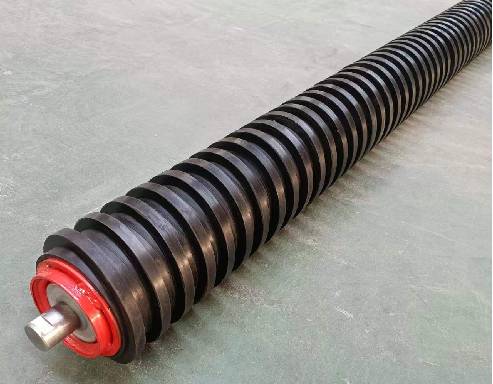 Afrikaans
Afrikaans  Albanian
Albanian  Amharic
Amharic  Arabic
Arabic  Armenian
Armenian  Azerbaijani
Azerbaijani  Basque
Basque  Belarusian
Belarusian  Bengali
Bengali  Bosnian
Bosnian  Bulgarian
Bulgarian  Catalan
Catalan  Cebuano
Cebuano  Corsican
Corsican  Croatian
Croatian  Czech
Czech  Danish
Danish  Dutch
Dutch  English
English  Esperanto
Esperanto  Estonian
Estonian  Finnish
Finnish  French
French  Frisian
Frisian  Galician
Galician  Georgian
Georgian  German
German  Greek
Greek  Gujarati
Gujarati  Haitian Creole
Haitian Creole  hausa
hausa  hawaiian
hawaiian  Hebrew
Hebrew  Hindi
Hindi  Miao
Miao  Hungarian
Hungarian  Icelandic
Icelandic  igbo
igbo  Indonesian
Indonesian  irish
irish  Italian
Italian  Japanese
Japanese  Javanese
Javanese  Kannada
Kannada  kazakh
kazakh  Khmer
Khmer  Rwandese
Rwandese  Korean
Korean  Kurdish
Kurdish  Kyrgyz
Kyrgyz  Lao
Lao  Latin
Latin  Latvian
Latvian  Lithuanian
Lithuanian  Luxembourgish
Luxembourgish  Macedonian
Macedonian  Malgashi
Malgashi  Malay
Malay  Malayalam
Malayalam  Maltese
Maltese  Maori
Maori  Marathi
Marathi  Mongolian
Mongolian  Myanmar
Myanmar  Nepali
Nepali  Norwegian
Norwegian  Norwegian
Norwegian  Occitan
Occitan  Pashto
Pashto  Persian
Persian  Polish
Polish  Portuguese
Portuguese  Punjabi
Punjabi  Romanian
Romanian  Russian
Russian  Samoan
Samoan  Scottish Gaelic
Scottish Gaelic  Serbian
Serbian  Sesotho
Sesotho  Shona
Shona  Sindhi
Sindhi  Sinhala
Sinhala  Slovak
Slovak  Slovenian
Slovenian  Somali
Somali  Spanish
Spanish  Sundanese
Sundanese  Swahili
Swahili  Swedish
Swedish  Tagalog
Tagalog  Tajik
Tajik  Tamil
Tamil  Tatar
Tatar  Telugu
Telugu  Thai
Thai  Turkish
Turkish  Turkmen
Turkmen  Ukrainian
Ukrainian  Urdu
Urdu  Uighur
Uighur  Uzbek
Uzbek  Vietnamese
Vietnamese  Welsh
Welsh  Bantu
Bantu  Yiddish
Yiddish  Yoruba
Yoruba  Zulu
Zulu take-up pulley
Understanding Take-Up Pulleys Their Function and Importance in Mechanical Systems
Take-up pulleys play a crucial role in the functioning of various mechanical systems, particularly in conveyor belts, cable systems, and other machinery that require tension regulation. These specialized pulleys are designed to help maintain the necessary tension in the belts or cables, ensuring smooth operation and extending the lifespan of equipment.
A take-up pulley is essentially a device that adjusts the slack in a continuous loop of material, such as a conveyor belt. Its primary function is to take up any excess length that may be generated due to wear and tear or environmental factors such as temperature changes. When a belt elongates, which is a common occurrence over time, the take-up pulley can be adjusted to compensate for this elongation, thereby maintaining the correct level of tension. This ensures optimal performance and minimizes the risk of slippage or misalignment.
In industrial settings, the significance of properly functioning take-up pulleys cannot be overstated
. For instance, in manufacturing facilities where conveyor belts transport materials from one station to another, a properly tensioned belt is essential. If the tension is too loose, the belt may slip, resulting in production delays and potentially damaging the materials being transported. On the other hand, if the tension is too tight, it can lead to excessive wear on both the belt and the take-up mechanism, leading to costly repairs and replacements.take-up pulley

Take-up pulleys come in various designs, including manual, automatic, and hydraulic systems. Manual take-up pulleys require an operator to adjust the tension manually, which can be labor-intensive and time-consuming, especially in large systems. Automatic take-up systems, on the other hand, utilize spring mechanisms to adjust tension automatically, providing a more efficient solution in many cases. Hydraulic take-up mechanisms are often employed in high-performance applications where precise tension control is critical.
Moreover, the choice of take-up pulley material can significantly influence its performance. Common materials include steel, aluminum, and various composites, each offering distinct advantages in terms of strength, weight, and resistance to environmental factors such as corrosion and temperature fluctuations. The right material selection depends on the specific application and operating conditions of the mechanical system.
In conclusion, take-up pulleys are an essential component of mechanical systems that require tension management. By ensuring that belts and cables maintain proper tension, these pulleys not only enhance the efficiency of operations but also contribute to the longevity of the equipment. As industries continue to evolve and embrace advanced technologies, the role of take-up pulleys will remain vital in optimizing performance and minimizing downtime. For engineers and maintenance professionals, understanding the function and importance of take-up pulleys is critical for the effective management of mechanical systems, ultimately leading to improved productivity and cost savings in a competitive landscape.
-
Revolutionizing Conveyor Reliability with Advanced Rubber Lagging PulleysNewsJul.22,2025
-
Powering Precision and Durability with Expert Manufacturers of Conveyor ComponentsNewsJul.22,2025
-
Optimizing Conveyor Systems with Advanced Conveyor AccessoriesNewsJul.22,2025
-
Maximize Conveyor Efficiency with Quality Conveyor Idler PulleysNewsJul.22,2025
-
Future-Proof Your Conveyor System with High-Performance Polyurethane RollerNewsJul.22,2025
-
Driving Efficiency Forward with Quality Idlers and RollersNewsJul.22,2025





























